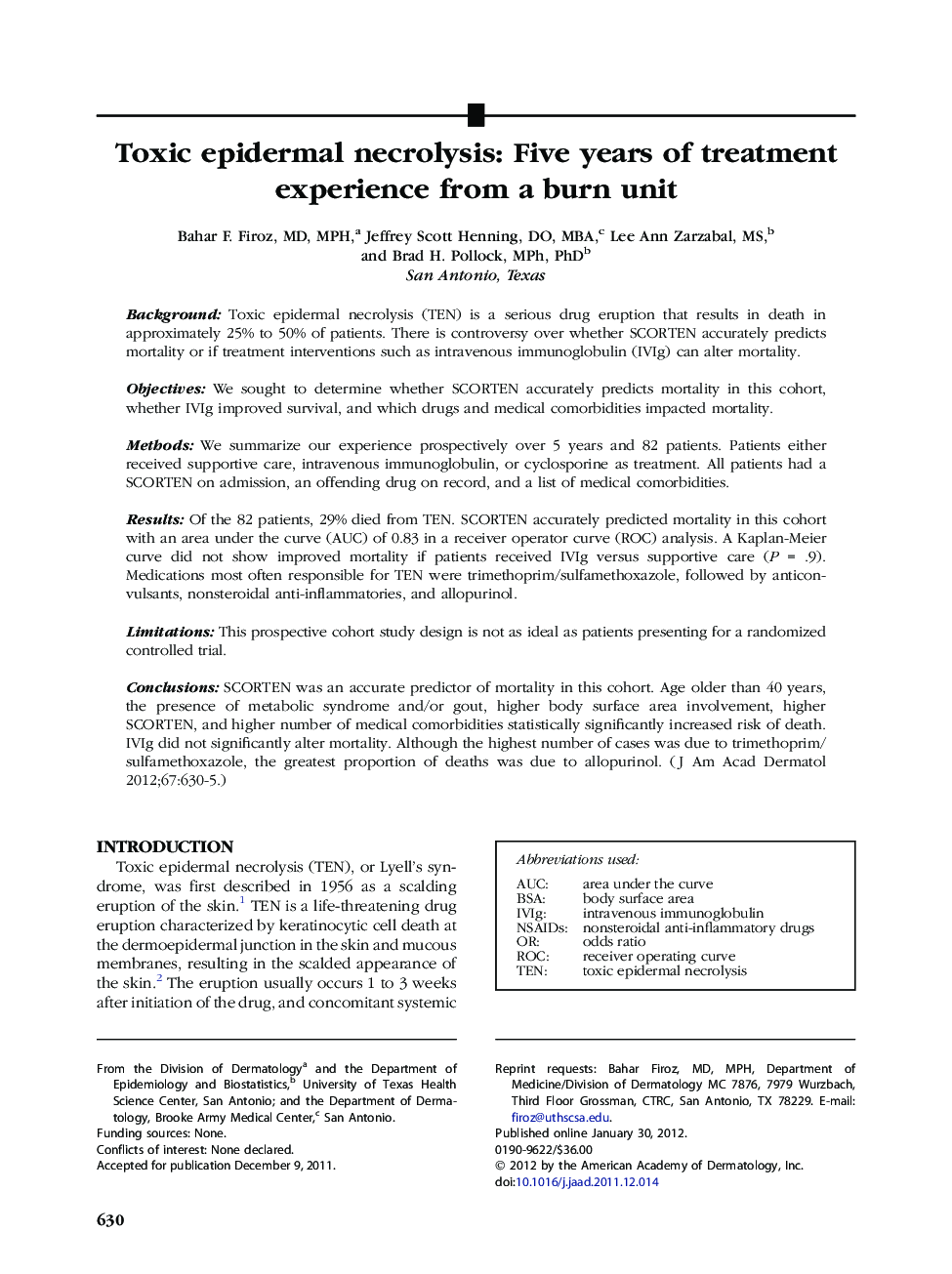| Article ID | Journal | Published Year | Pages | File Type |
|---|---|---|---|---|
| 3206212 | Journal of the American Academy of Dermatology | 2012 | 6 Pages |
BackgroundToxic epidermal necrolysis (TEN) is a serious drug eruption that results in death in approximately 25% to 50% of patients. There is controversy over whether SCORTEN accurately predicts mortality or if treatment interventions such as intravenous immunoglobulin (IVIg) can alter mortality.ObjectivesWe sought to determine whether SCORTEN accurately predicts mortality in this cohort, whether IVIg improved survival, and which drugs and medical comorbidities impacted mortality.MethodsWe summarize our experience prospectively over 5 years and 82 patients. Patients either received supportive care, intravenous immunoglobulin, or cyclosporine as treatment. All patients had a SCORTEN on admission, an offending drug on record, and a list of medical comorbidities.ResultsOf the 82 patients, 29% died from TEN. SCORTEN accurately predicted mortality in this cohort with an area under the curve (AUC) of 0.83 in a receiver operator curve (ROC) analysis. A Kaplan-Meier curve did not show improved mortality if patients received IVIg versus supportive care (P = .9). Medications most often responsible for TEN were trimethoprim/sulfamethoxazole, followed by anticonvulsants, nonsteroidal anti-inflammatories, and allopurinol.LimitationsThis prospective cohort study design is not as ideal as patients presenting for a randomized controlled trial.ConclusionsSCORTEN was an accurate predictor of mortality in this cohort. Age older than 40 years, the presence of metabolic syndrome and/or gout, higher body surface area involvement, higher SCORTEN, and higher number of medical comorbidities statistically significantly increased risk of death. IVIg did not significantly alter mortality. Although the highest number of cases was due to trimethoprim/sulfamethoxazole, the greatest proportion of deaths was due to allopurinol.
